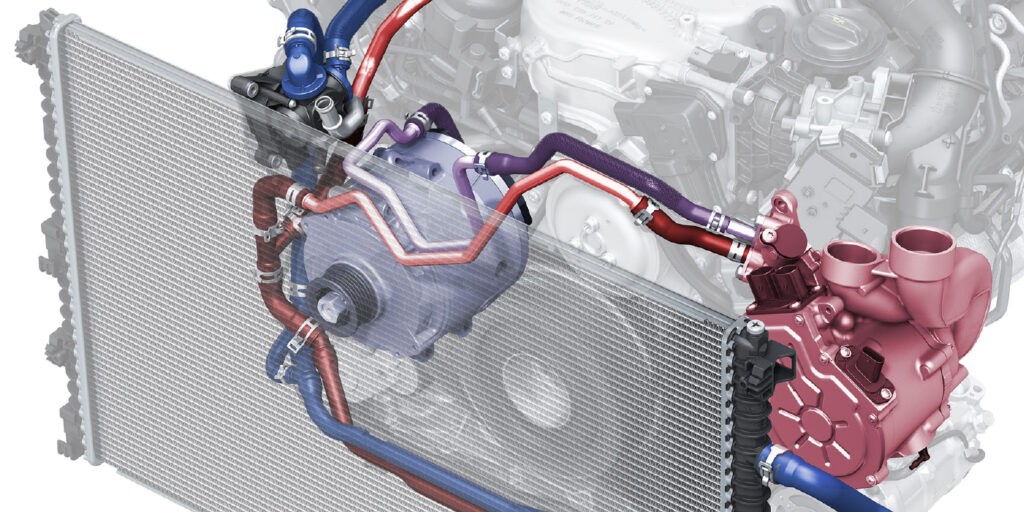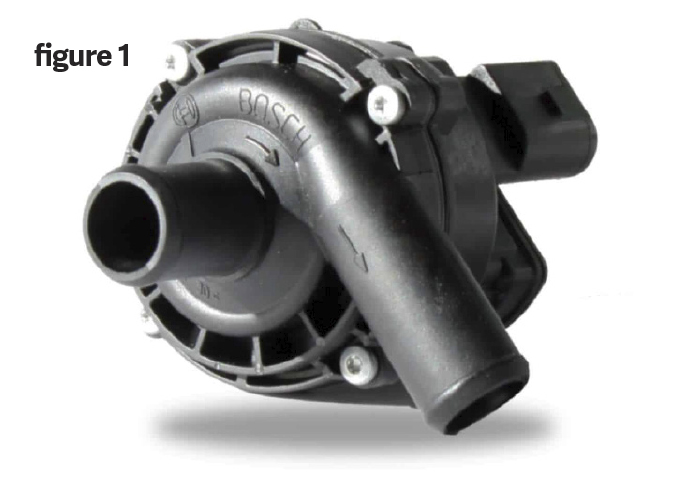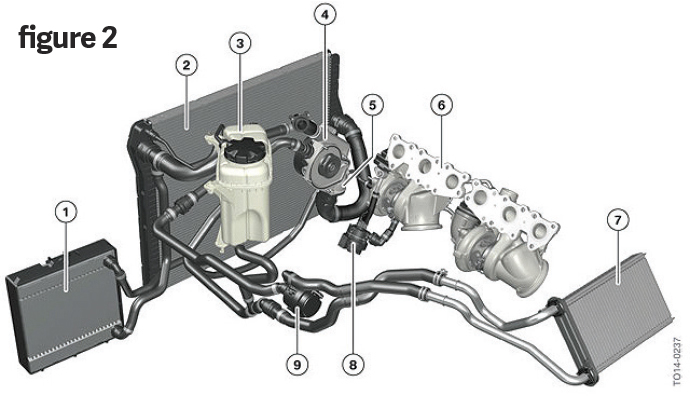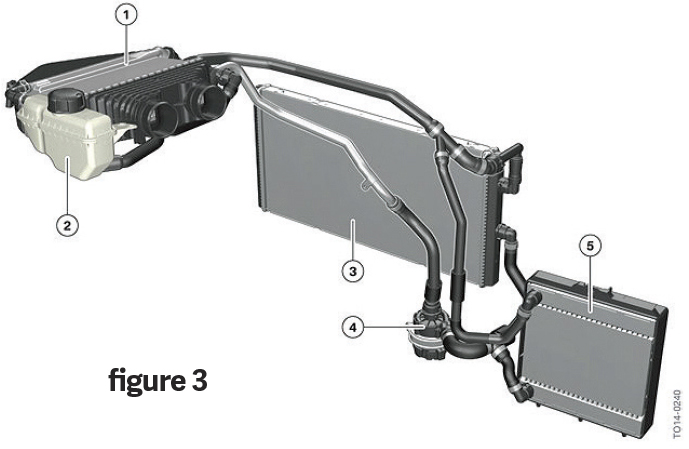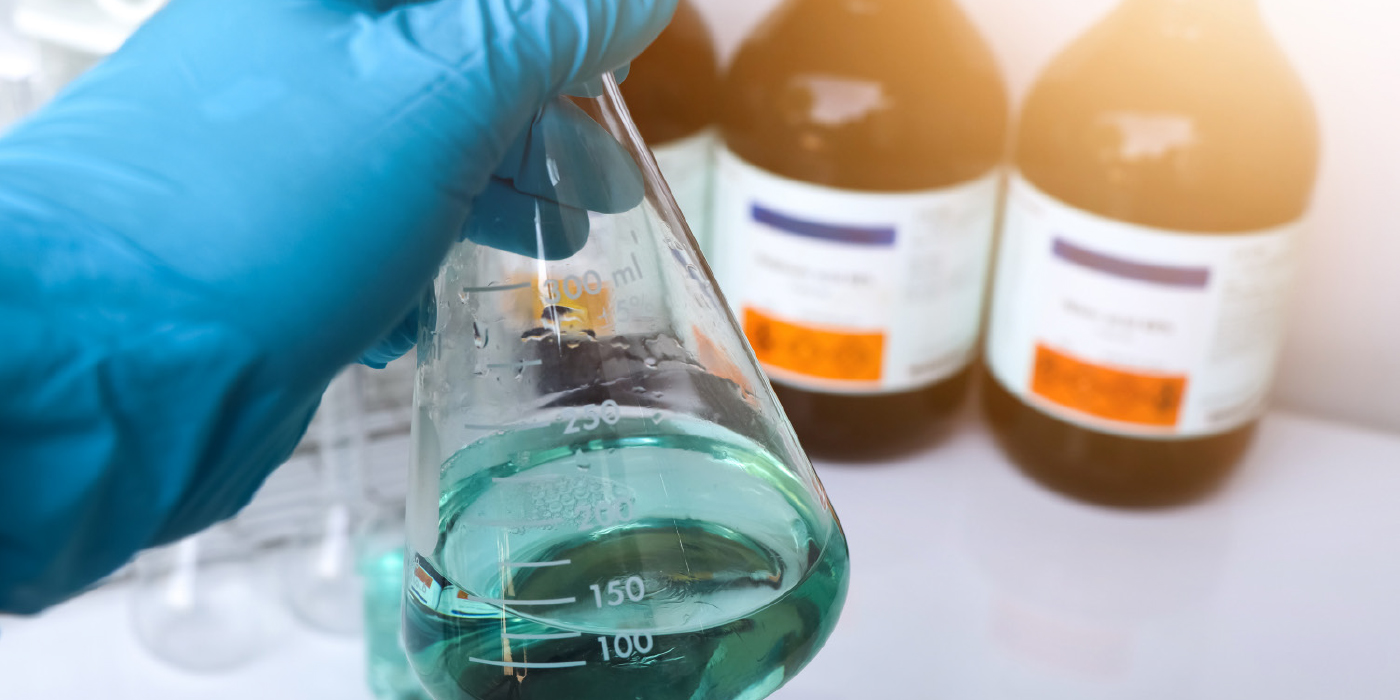Courtesy of Underhood Service
our customer brings their vehicle into your shop, stating that their heater doesn’t always blow hot air. The engine doesn’t overheat, there is air coming from ducts, but it doesn’t get as hot as it once did. In years past, your first instinct might be to blame the thermostat, or a blockage inside the heater core. But, the issue could in fact be caused by the auxiliary coolant pump.
Auxiliary coolant pumps (figure 1) are typically not connected to the engine cooling circuit. They are typically installed for one of two reasons: to circulate warm coolant to the heater core, or to circulate coolant throughout an additional cooling circuit such as charge air cooling.
Coolant Circulation:
These pumps were first used on Mercedes-Benz diesel vehicles in the 1980s. Without the auxiliary pump to boost the coolant flow, the blower fan can end up removing too much heat from the coolant, causing the heater core to get cold. Mercedes then started using these pumps on some of its gasoline-powered vehicles, along with larger heater cores for improved passenger comfort.
Mercedes, Audi and BMW have also utilized this type of pump to heat the vehicle cabin for short periods of time after the ignition is turned off. This keeps the vehicle cabin warm while filling up the gas tank or stopping for food. Auxiliary coolant pumps are becoming more and more common as modern vehicles become more efficient and generate less excess heat.
Additional Cooling Circuits:
Certain luxury imports will utilize a separate cooling circuit for their charge air cooling. BMW notably uses this type of system on several engines including the S55 inline-6 and the S63 V8.
In fact, there are three separate electric coolant pumps on the S55: one to supply coolant to the turbochargers (#8 in figure 2), one to supply coolant to the heater core (#9 in figure 2), and a third to circulate coolant through the separate charge air cooling circuit (#4 in figure 3).
Operation:
Operating parameters will vary between manufacturers, so we’ll speak in general terms. The auxiliary pump will most likely not operate continuously. It will likely be controlled/regulated by the Body Control Module (BCM) based on a variety of inputs. This can include vehicle speed, engine RPM, coolant temperature, climate control requested temperature, blend door position, fan speed, interior and exterior temperatures, battery voltage, recirculation flap position, security module input, and more.
The auxiliary pump may also be used to circulate engine coolant through the turbocharger’s center section for 2 to 15 minutes after the ignition is shut off. The circulating coolant helps to cool the turbocharger. The run time and speed of the pump will be determined by a number of factors. Most systems look at the coolant temperature of the engine using sensors mounted in the head, block, and radiator. Once a sufficient drop in temperature is measured, the pump will be shut off. Some systems will also look at previous calculated load and throttle position before the key was removed from the ignition to determine how long to run the pump.
So, how do you test these pumps? The best tool for the job is a scan tool which is capable of bi-directional control. This will allow you to cycle the pump on and off by command to determine whether or not it is circulating coolant as designed.
The vehicle manufacturer may have a separate procedure which can activate the pump. For example, in an N54-powered BMW 3 Series, the following procedure will activate the electric coolant pump:
Ignition ON, engine OFF. Hold the accelerator pedal to the floor for 10-12 seconds. The electric coolant pump will activate, then cycle on and off for approximately 12 minutes. This is a handy trick whenever you need to bleed the cooling circuit on these vehicles, but don’t forget to open the bleeder screw on the expansion tank first.
How Do They Fail?
In many cases, a failing auxiliary pump will not cause the engine to overheat. Instead, the customer will notice that their heater isn’t blowing hot air like they think it should, especially at low speeds and at idle.
The most likely reason for failure would be wear and tear. Like all rotating electrical devices, brushes wear out and windings short. Coolant can intrude past the shaft seals, reducing the life of the bearings and electric motor. A low coolant level can cause cavitation, tiny bubbles inside the coolant which can erode metal and crack plastic.
Here to Stay:
Don’t be fooled into thinking that these pumps will go away with the surge in hybrid and electric vehicle production. Quite the opposite, in fact. Those hybrid and electric vehicles rely on these pumps to circulate coolant for battery thermal management, as well as vehicle cabin heating.
Vehicles which are equipped with engine start/stop systems will also rely on electric coolant pumps for cabin heating while the engine is not running. If a pump fails on some hybrids, the system may disable the hybrid drive system or put the vehicle into a “limp mode”.

